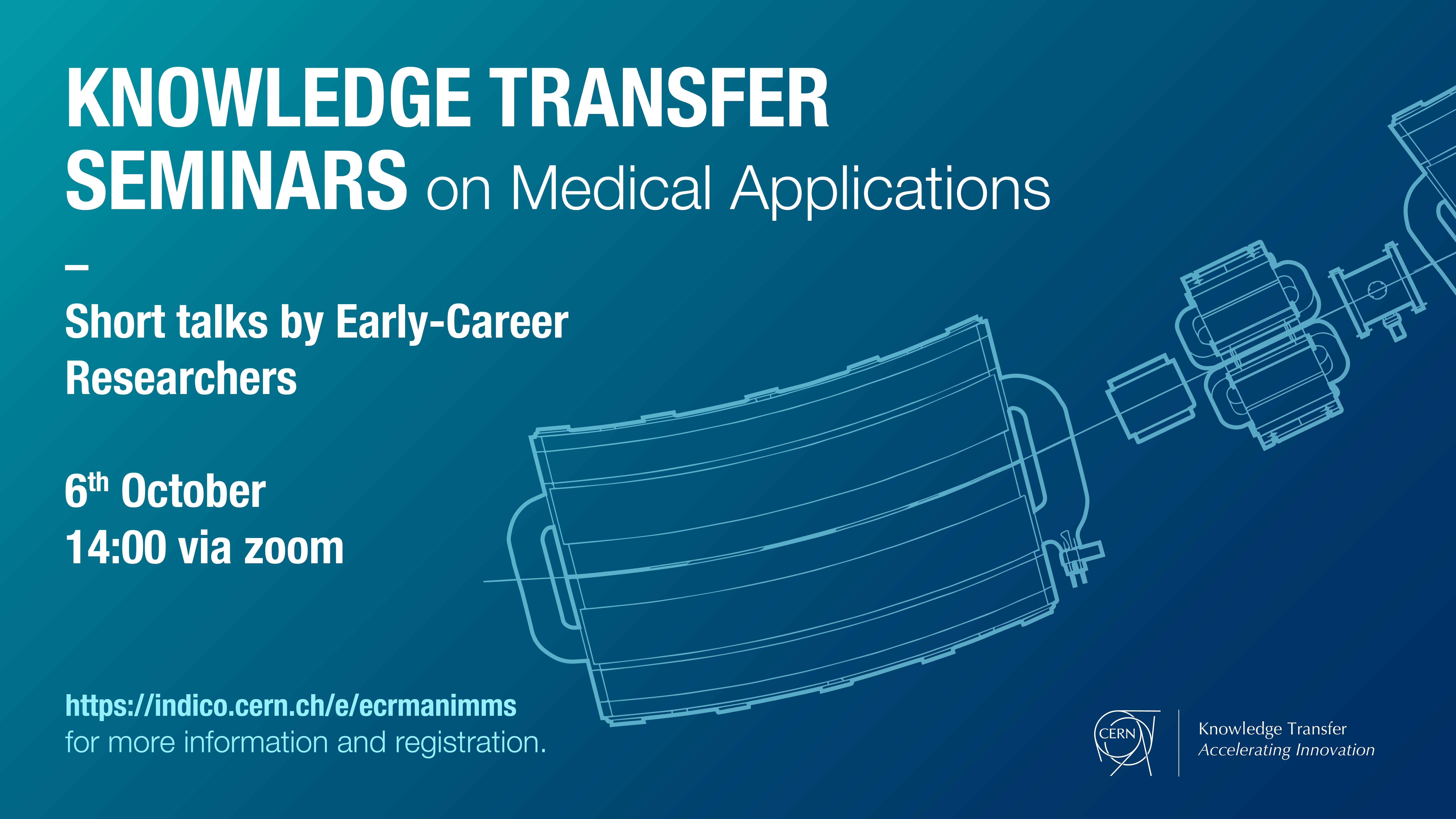EARLY-CAREER RESEARCHERS IN MEDICAL APPLICATIONS @ CERN – SHORT TALKS

Discover how technological advances for high-energy physics have become essential tools for modern medicine.
This series of short talks is given by Early-Career Researchers working on projects related to diverse medical applications that arise from technology developed at CERN and in high-energy physics.
In this seminar 3 ECRs working on the NIMMS project will share their work.
The Next Ion Medical Machine Study (NIMMS) project outlines an umbrella R&D programme for the development of critical accelerator technologies related to ion therapy; the programme builds on existing activities and on core CERN competences.
This seminar will take place on zoom:
https://cern.zoom.us/j/66524815946?pwd=K2twc3lSdDVRRlVSYzZlUSswSGNwZz09
Passcode: NIMMS
There are very limited seats available in the room, please contact us if you'd like to attend.
Please check the indico page for updates. During the seminar, in case of technical issues, It is where we will post information. Thank you!
For information about the next Knowledge Transfer Seminar, sign up to our e-group at http://cern.ch/go/F9cX